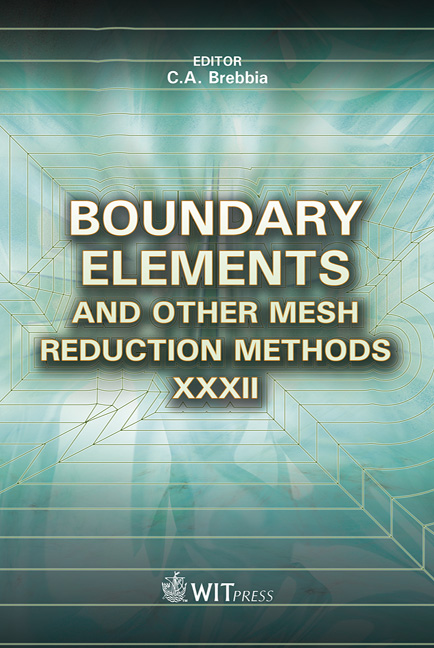3-D Acoustic Shape Sensitivity Analysis Using The Fast Multipole Boundary Element Method
Price
Free (open access)
Transaction
Volume
50
Pages
11
Page Range
215 - 225
Published
2010
Size
509 kb
Paper DOI
10.2495/BE100191
Copyright
WIT Press
Author(s)
C. J. Zheng, T. Matsumoto, T. Takahashi & H. B. Chen
Abstract
The fast multipole boundary element method (FMBEM), based on the Burton- Miller formulation for 3-D acoustic sensitivity analysis, is presented in this paper in order to overcome the difficulties in the shape sensitivity analyses using the boundary element method based on the direct differentiation method. The Burton-Miller formulation, which is a linear combination of the conventional boundary integral equation (CBIE) and its normal derivative (NDBIE), is applied to circumvent the difficulty caused by the so-called fictitious eigenfrequencies. The fast multipole method (FMM) is also employed to improve the overall computational efficiency. The sensitivity boundary integral equations of hypersingular type are obtained by the direct differentiation method. The correctness and validity of the method are demonstrated through some numerical results, from which the effectiveness of the present method is shown for 3-D acoustic shape sensitivity analyses. Keywords: acoustics, shape sensitivity, direct differentiation method, fictitious eigenfrequency, Burton-Miller’s method, fast multipole boundary element method. 1 Introduction The process of computing gradients of the defined acoustic performance function associated with a structure with respect to design variables has been termed as the acoustic sensitivity analysis. Although the BEM has the incomparable superiority, which makes it widely used in the acoustic sensitivity analysis, it also has some difficulties in solving exterior acoustic problems. The first one is that the BEM with the CBIE fails to yield unique solutions for exterior problems at the eigenfrequencies of the associated interior problems. These eigenfrequencies
Keywords
acoustics, shape sensitivity, direct differentiation method, fictitious eigenfrequency, Burton-Miller’s method, fast multipole boundary element method





